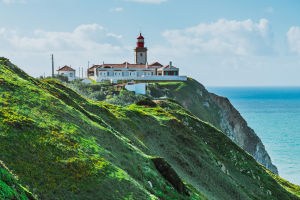
Hawksbill: Facts & Threats

The Hawksbill Turtle (Eretmochelys imbricata) is one of the most recognizable sea turtles due to its distinctive beak-like mouth and stunningly patterned shell.
Found in tropical and subtropical waters around the world, this critically endangered species plays a crucial role in maintaining the health of coral reefs and marine ecosystems.
Physical Characteristics
Hawksbill turtles are relatively small compared to other sea turtle species, usually weighing between 100 to 150 pounds and measuring about 2.5 to 3 feet in length. Their shells are vibrant and colorful, with a unique pattern of overlapping scutes (scales) that resemble a tortoiseshell, making them a target for illegal trade.
The most distinctive feature of the Hawksbill Turtle is its narrow, pointed beak, which allows it to reach into crevices in coral reefs to feed on sponges, anemones, and other invertebrates. This diet not only helps control sponge populations but also contributes to the health of coral reefs by giving corals more room to grow.
Related
 Discover Europe's Most Stunning Bridge: Why the Europa Bridge and Hotel Stubai Will Leave You Breathless!
Discover Europe's Most Stunning Bridge: Why the Europa Bridge and Hotel Stubai Will Leave You Breathless!
 The Secret to Exploring Dubai on a Budget: Hop on the Metro!
The Secret to Exploring Dubai on a Budget: Hop on the Metro!
 Unlock the Secrets of Cochem: Discover the Hidden Gems and Jaw-Dropping Views You Won't Believe!
Unlock the Secrets of Cochem: Discover the Hidden Gems and Jaw-Dropping Views You Won't Believe!
 You Won't Believe What's Hidden Around Tokyo Skytree – An Epic Adventure Awaits!
You Won't Believe What's Hidden Around Tokyo Skytree – An Epic Adventure Awaits!
 Discover Australia's Epic Great Ocean Road Adventure in Just 3 Days - Prepare to Be Amazed!
Discover Australia's Epic Great Ocean Road Adventure in Just 3 Days - Prepare to Be Amazed!
 Can You Conquer the Cliffs of Cabo da Roca in One Epic Day?
Can You Conquer the Cliffs of Cabo da Roca in One Epic Day?
The Journey of a Hawksbill Sea Turtle | Reptiles, Amphibians, and Fish | The Good and the Beautiful
Video by The Good and the Beautiful Homeschool Science
Habitat and Distribution
Hawksbill turtles are typically found in coral reef habitats of tropical and subtropical regions. They are distributed across the Atlantic, Pacific, and Indian Oceans, with major populations found in the Caribbean, Southeast Asia, and parts of the Indian Ocean. These turtles spend their time in shallow coastal areas and lagoons, where they find their preferred food sources.
Life Cycle and Reproduction
Hawksbill turtles are solitary animals, only coming together during mating season. Female Hawksbills return to the same beaches where they were born to lay their eggs. Nesting occurs every 2 to 3 years, with the females digging nests in the sand and laying between 100 to 150 eggs per clutch. After about two months, the hatchlings emerge and make their perilous journey to the ocean.
Unfortunately, the survival rate of these hatchlings is extremely low, with only a small percentage making it to adulthood due to predation, human interference, and environmental threats.
Conservation Status and Threats
The Hawksbill Turtle is listed as critically endangered by the International Union for Conservation of Nature (IUCN). Their population has drastically declined due to several factors, including habitat loss and entanglement in fishing nets.
Additionally, climate change poses a significant threat to their nesting sites. Rising temperatures can skew the ratio of hatchlings (as warmer sand produces more females), while rising sea levels and increased storm activity can destroy nesting beaches.
Conservation Efforts
Various international laws and agreements, such as the Convention on International Trade in Endangered Species (CITES), protect Hawksbill turtles from exploitation. Marine protected areas, beach conservation efforts, and education campaigns also play a crucial role in safeguarding their future. Organizations worldwide are working to protect nesting beaches, reduce bycatch in fisheries, and curb illegal trade in Hawksbill shells.

Lykkers, the Hawksbill Turtle is a critical part of marine ecosystems, playing a unique role in preserving coral reefs. Despite facing numerous threats, ongoing conservation efforts are key to ensuring the survival of this extraordinary species for future generations.